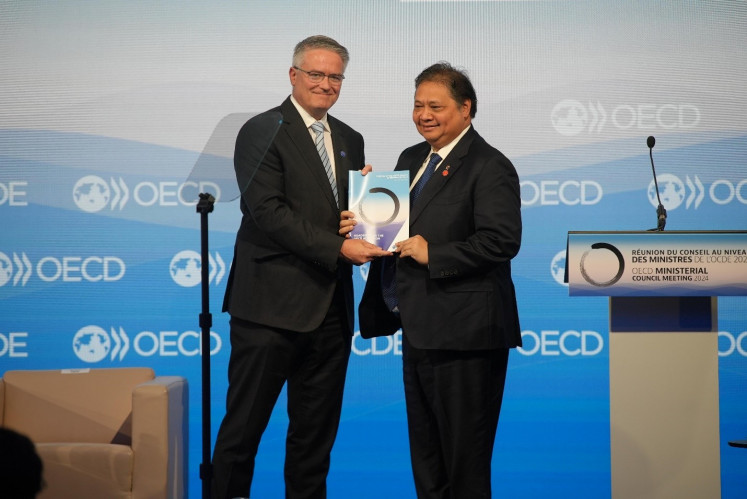Excelcomindo gets ready for market downturn
The Jakarta Post has launched a biweekly corporate review on publicly listed companies since Aug
Change Size

The Jakarta Post has launched a biweekly corporate review on publicly listed companies since Aug. 11. Today’s edition is on cellular phone operator PT Excelcomindo Pratama (XL). Here are the stories.
With analysts predicting a downturn in the next two to three years, the country's telecommunication companies are preparing strategies to deal with a saturated market.
Analysts have predicted that by 2011 the nation's telecom market will be saturated, as the penetration rate hits 70 percent, equivalent to a 175 million subscriber base.
This year, it is estimated the penetration rate will reach more than 62 percent, representing a 145 million subscribers base out of the roughly 230 million total Indonesian population.
Just like other players in the industry, publicly listed PT Excelcomindo Pratama (XL), the nation's third largest telecoms operator, is also preparing a package of strategies to help the company deal with the predicted trends.
"We must look for other revenue resources, that can be mobilized by moving more to the content side of the industry and by providing more value added services," president director Hasnul Suhaimi said in an interview recently.
Subscribers here in Indo-nesia focus more on voice and texts and tend to be more conservative than users in Japan and Korea, paying less attention to content applications.
But, Hasnul believes that this is because the operators have not yet founddream application" that can make people fall in love with it and want to use it.
Raymond Kosasih, a Deutsche Bank analyst, said that it was very important for the company to findsources of revenue" besides voice and volume.
"Every idea must be explored over meticulously to strive for that value added service that will satisfy what people want," he said.
Raymond also mentioned other business opportunities that can be explored, such as mobile advertising and remittance services.
XL actually already offers the remittance services. The firm together with BNI, the country's third largest lender, has launched a remittance service that enables XL users, mostly workers, in Hong Kong to send their money to their relatives at home.
Looking at XL's first half performance, the contribution from non-voice services is already 32 percent of the total revenue of the cellular telecommunication service, leaving room for growth.
The report shows that from the voice service, XL secured Rp 3.17 trillion ($339 million) in income in the first semester, or up 102 percent compared to the same period last year.
XL only enjoyed 25 percent growth in non-voice services during the same period, with revenue rising to Rp 1.5 trillion from Rp 1.2 trillion.
The significant growth from voice revenues led to a 59 percent growth in revenue during the first semester, rising to Rp 5.8 trillion.
Hasnul forecast that by the end of year, overall revenue will grow by 40 percent from Rp 8 trillion a year earlier. XL aims to reach up to 27 million subscribers this year, up from 15.5 million subscribers a year earlier.

XL corporate finance and treasury senior vice president Johnson Chan said that for next year, the company has set a lower growth target, recognizing that the market will slow down.
The anticipated slowdown is reflected in the company's capital expenditure plan for 2009, which is pegged at no more than $1 billion, Hasnul says, adding that the company still has enough network capacity to accommodate new subscribers.
The 2009 figure is lower than the $1.25 billion the company has set aside for 2008 to expand its network, which represents a 78 percent growth on last year's capital expenditure of $700 million.
The $1 billion capital fund for next year will be used mostly to develop data-based businesses, as part of the company's diversification strategy.
When it comes to tariffs, Hasnul said the company would develop a strategy focusing on market segmentation alongside a multiple pricing policy, rather than intensifying across-the-board tariff reductions.









